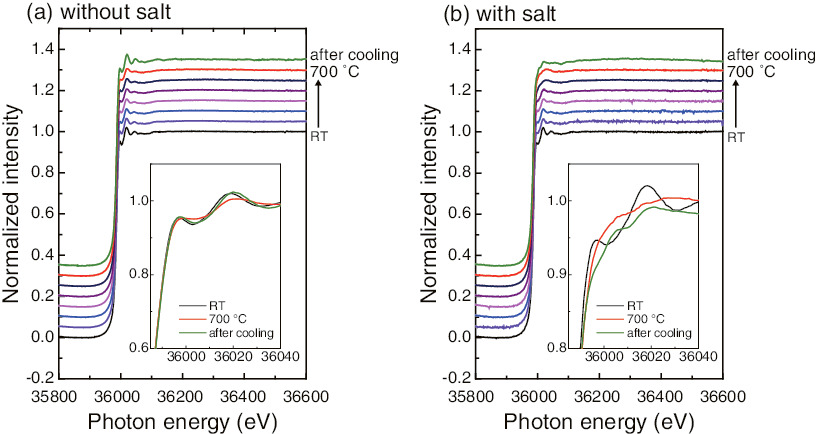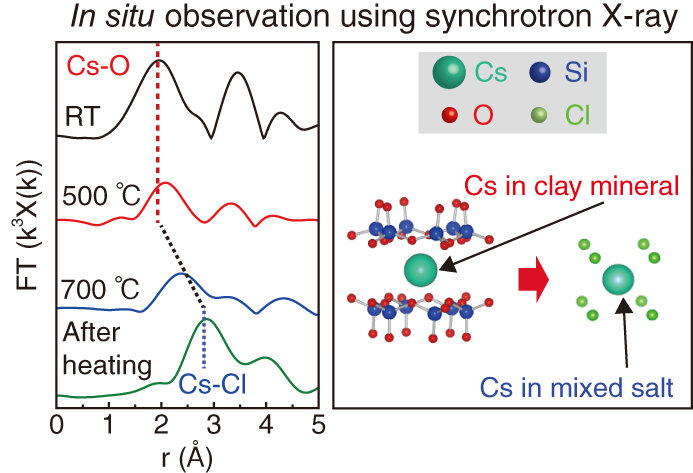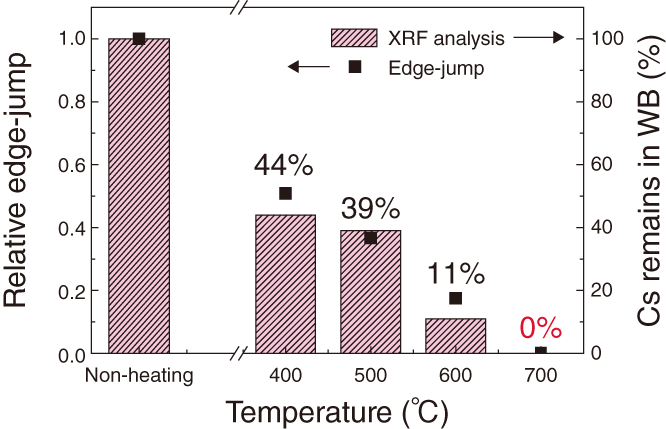
Fig.1-37 Cs K edge XAFS spectra of WB samples using synchrotron x-rays

Fig.1-38 Mechanism of Cs removal from WB

Fig.1-39 Cs remaining in WB after heat treatment with mixed salt, as determined by XRF analysis
A large quantity of radioactive material was scattered by the TEPCO’s Fukushima Daiichi NPS accident six years ago. Most of these materials were deposited in the soil around Fukushima. More than 2000 million m3 of radioactive contaminated soil has been placed in a temporary storage facility. Therefore, reducing the volume of the contaminated soil is important. Among the scattered radioactive materials, 137Cs (Cs) is the main radioisotope. It has been reported that most Cs is strongly fixed to clay minerals (especially weathered biotite, WB) in the soil. We investigate the mechanism of the Cs-removal process and develop an effective Cs-removal method. Heat treatment is one soil-decontamination method with high efficiency. However, heating to more than 1000 ℃ is necessary to melt clay minerals, and it is necessary to reduce the processing cost. In this study, an in situ extended X-ray-absorption fine structure (in situ EXAFS) spectroscopic analysis at high temperature was conducted to investigate the mechanism of Cs removal from WB from Fukushima, as induced by heating with a mixture of NaCl and CaCl2 salts.
In the experiment, we chose WB derived from Abukuma, where granite forms an interbed with vermiculite by weathering. This clay mineral is known to be representative of the soil in Fukushima. To investigate the effect of molten alkali salts upon clay minerals, we added a NaCl-CaCl2 mixed salt to the studied samples, conducted in situ EXAFS measurements at 200 ℃–700 ℃, and compared the differences in the spectra with and without the alkali salt. This indicated that most Cs remained in WB during heating at 200 ℃–700 ℃. In addition, the in situ EXAFS spectra gradually changed upon heating with mixed salt and a completely different spectrum was observed for the sample after cooling from 700 ℃ to room temperature (RT) (Fig.1-37). This means that the local structure around Cs was modified by the influence of the salt at high temperatures on the basis of the results for the radial-structure-function analysis obtained from in situ EXAFS. As the result, Cs formed Cs-Cl bonds after cooling to RT from 700 ℃ (Fig.1-38).
If Cs is taken in a chloride phase, it is expected that Cs may be removed effectively from a sample after heating by washing it with water. Therefore, quantum analysis using fluorescence X-rays was performed to estimate the Cs content after washing of the salt from the sample. As the result, we concluded that almost all of the Cs was removed from the WB by heating at 700 ℃ with mixed salt (Fig.1-39).
This study was performed under the JAEA project, “Cs sorption-desorption mechanism on clay minerals,” based on the special account for Fukushima environmental recovery from the Ministry of Education, Culture, Sports, Science and Technology, Japan (MEXT). This work was supported by the Japan Society for the Promotion of Science (JSPS) KAKENHI Grants-in-Aid for Scientific Research (A) (No.16H02437) and (C) (No.16K06965). The synchrotron radiation experiments were performed using the BL11XU of SPring-8 (Proposal No.2015B-3504).